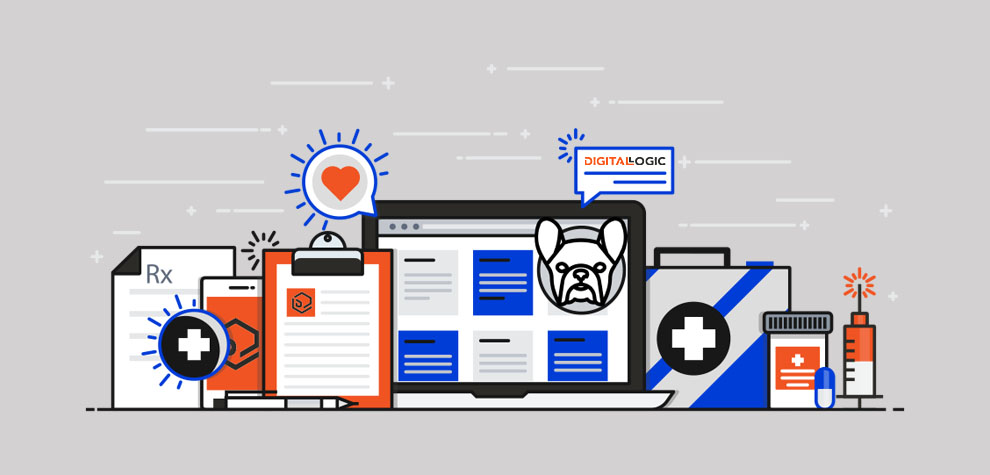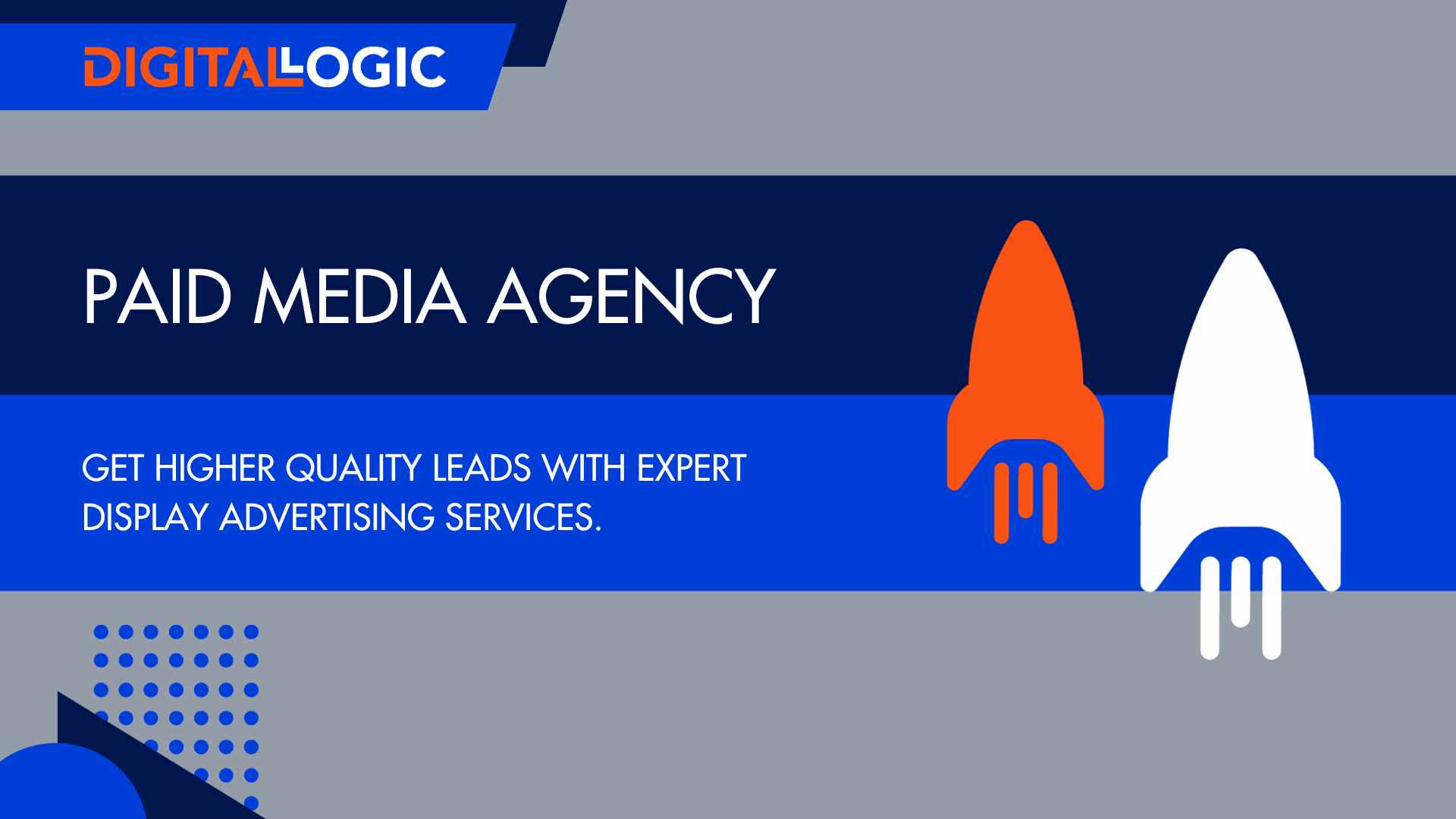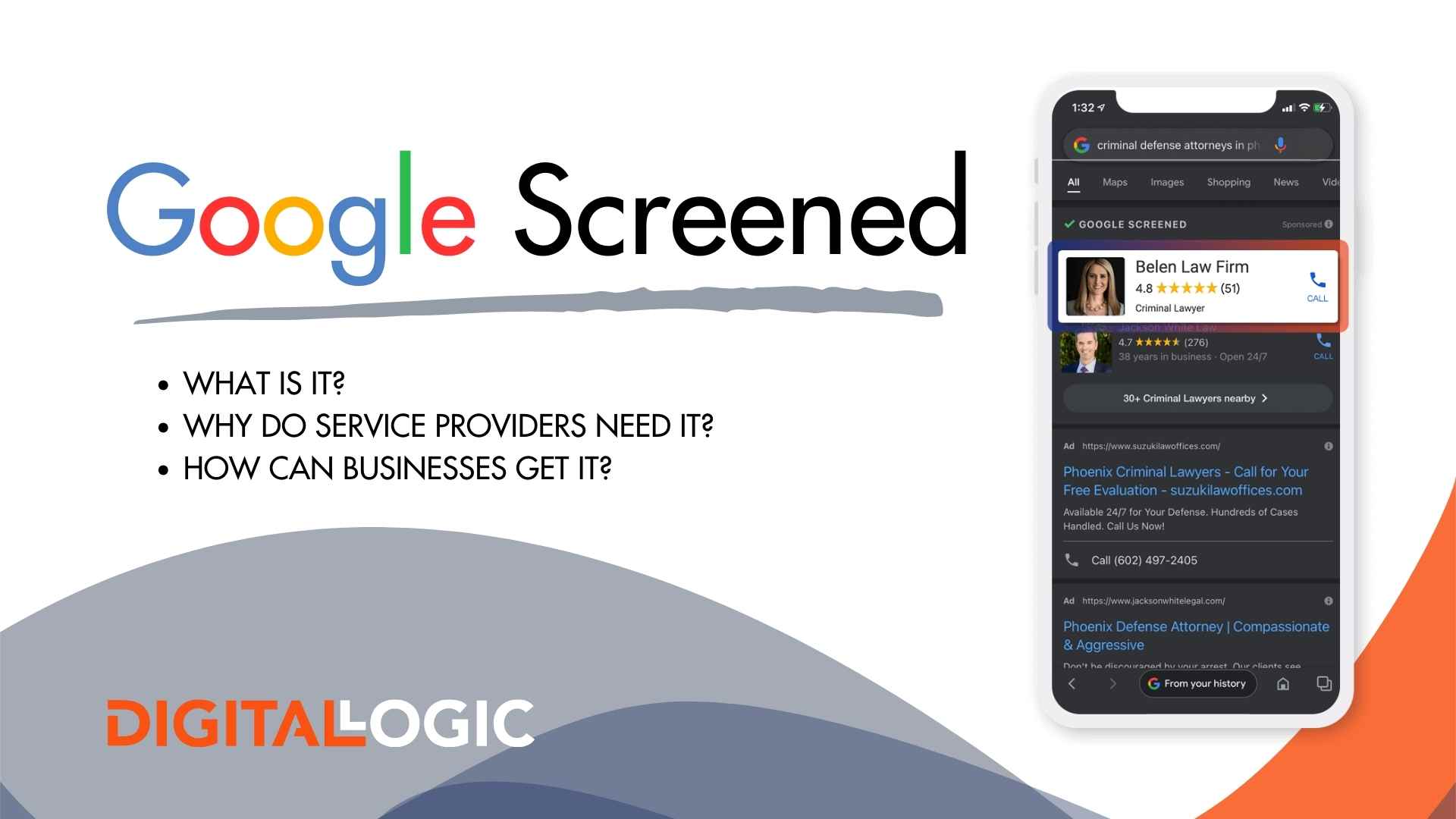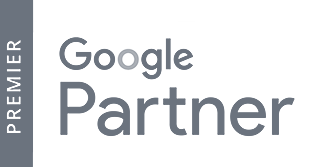Healthcare marketing strategy involves communicating health information using customer-centered and science-based strategies to promote healthcare practices.
Digital marketing for the healthcare industry can be a challenge, no doubt. Just as the healthcare industry evolves, so does the marketing industry. Healthcare professionals have to be two steps ahead in order to compete with the medical marketing tactics of today’s society.
Healthcare marketing is the process of creating and delivering valid health information and interventions using both science-backed and customer-driven strategies in order to promote better healthcare.
Healthcare marketing incorporates a variety of tactics and integrates multi-channel targeted tactics designed to acquire a specific demographic of patients, engage through retargeting and nurture them through the buyer’s journey until they become lifelong patients. The success of a healthcare marketing campaign is measured through specific, measurable metrics that are aligned with the company goals.

 Healthcare marketing is a gateway to the value-based care mentioned previously. This is done by patient education, providing customer service, and opportunities to engage with healthcare professionals that were never previously available. This enables healthcare providers to work alongside patients to achieve better health outcomes while bringing in more revenue for the healthcare system.
At Digital Logic, we offer an array of professional healthcare marketing services to help grow your practice or brand recognition online.
Healthcare marketing is a gateway to the value-based care mentioned previously. This is done by patient education, providing customer service, and opportunities to engage with healthcare professionals that were never previously available. This enables healthcare providers to work alongside patients to achieve better health outcomes while bringing in more revenue for the healthcare system.
At Digital Logic, we offer an array of professional healthcare marketing services to help grow your practice or brand recognition online.

 Healthcare providers must start the process by first, getting outdated mindsets out of the way. If internal teams need to be restructured, this is also something that speeds up the process. Encourage employees to adopt the new technology and embrace the new mindset: everyone works together to form a cohesive unit because this gives more value to the patients.
Healthcare providers must start the process by first, getting outdated mindsets out of the way. If internal teams need to be restructured, this is also something that speeds up the process. Encourage employees to adopt the new technology and embrace the new mindset: everyone works together to form a cohesive unit because this gives more value to the patients.

 Every company should also think of itself as a marketing company. How good is your company if you can’t reach your customers or patients? However, you don’t just stop trying, do you? No, you fight back and try harder, which is exactly why you’re here, reading this post!
We’re here to tell you, it doesn’t matter which segment of the healthcare industry you’ve found yourself in. The reality is, you have an audience that is always a potential patient out there. This audience turns to the internet to get answers to their medical questions. They go online to educate themselves for their own personal well-being. When it comes to healthcare, everyone is trying to learn something new, every single day. There’s a topic of interest for everyone, whether it be new diagnostic options or generic news about the industry or foreseen technological advances.
This is the golden opportunity for healthcare marketers: create compelling content and get it out there to the people to want to read it. In other words, educate your potential patient who is trying to better themselves so that they could be your patient longer.
Composing effective copy takes skill and experience. If you lack the marketing know-how or the time to write your own copy, consider working with a healthcare copywriter.
How do you know what prospective patients what to know? This is where keyword planning and content strategy come in. Combined, these are commonly referred to as SEO or search engine optimization.
Every company should also think of itself as a marketing company. How good is your company if you can’t reach your customers or patients? However, you don’t just stop trying, do you? No, you fight back and try harder, which is exactly why you’re here, reading this post!
We’re here to tell you, it doesn’t matter which segment of the healthcare industry you’ve found yourself in. The reality is, you have an audience that is always a potential patient out there. This audience turns to the internet to get answers to their medical questions. They go online to educate themselves for their own personal well-being. When it comes to healthcare, everyone is trying to learn something new, every single day. There’s a topic of interest for everyone, whether it be new diagnostic options or generic news about the industry or foreseen technological advances.
This is the golden opportunity for healthcare marketers: create compelling content and get it out there to the people to want to read it. In other words, educate your potential patient who is trying to better themselves so that they could be your patient longer.
Composing effective copy takes skill and experience. If you lack the marketing know-how or the time to write your own copy, consider working with a healthcare copywriter.
How do you know what prospective patients what to know? This is where keyword planning and content strategy come in. Combined, these are commonly referred to as SEO or search engine optimization.

 Sorry to say it, but it’s 2020, and if your healthcare website isn’t mobile responsive by now, you probably aren’t getting any organic traffic. In 2018, Google rolled out a new algorithm for search results with respect to mobile indexing. Basically, Google decided it was only going to show search results based on the website’s mobile page version instead of the desktop version. Therefore, every healthcare website out there that isn’t mobile responsive, is only going to show for branded keywords, such as the company name.
The bottom line here is: say bye-bye to new customers if you aren’t willing to have a responsive website.
More than half of online traffic comes from a mobile device. This shouldn’t shock anyone. So are more than half of your healthcare marketing agency’s efforts going to the mobile-researching patient?
So, if your site’s a blast-from-the-past, we recommend making sure you have call-to-actions, CTA for short, and that they’re clearly visible. For more information on rebuilding your healthcare marketing website, check out Web Design Best Practices, Hospital Web Design Services, or Healthcare Web Design Services.
Sorry to say it, but it’s 2020, and if your healthcare website isn’t mobile responsive by now, you probably aren’t getting any organic traffic. In 2018, Google rolled out a new algorithm for search results with respect to mobile indexing. Basically, Google decided it was only going to show search results based on the website’s mobile page version instead of the desktop version. Therefore, every healthcare website out there that isn’t mobile responsive, is only going to show for branded keywords, such as the company name.
The bottom line here is: say bye-bye to new customers if you aren’t willing to have a responsive website.
More than half of online traffic comes from a mobile device. This shouldn’t shock anyone. So are more than half of your healthcare marketing agency’s efforts going to the mobile-researching patient?
So, if your site’s a blast-from-the-past, we recommend making sure you have call-to-actions, CTA for short, and that they’re clearly visible. For more information on rebuilding your healthcare marketing website, check out Web Design Best Practices, Hospital Web Design Services, or Healthcare Web Design Services.
 In terms of engagement, no other form of media can really rival video. This is why TV ads have always been the big-shots of past marketing, and also why Youtube ads are quickly becoming more popular than other forms of advertising. A little known fact about Youtube: it’s not only a video website, but it’s also actually a search engine, owned by Google. With over 4 billion searches a month, Youtube is actually bigger than Yahoo, Bing, AOL and Ask, combined. With these facts in mind, as a healthcare marketing professional, you should really consider making video marketing a cornerstone of your future marketing efforts.
You can choose to do a short ad to play before Youtube videos or create your own channel to continue to promote your brand. Allow some room for experimentation as to what works best for your healthcare niche.
Ever heard of “white coat syndrome” or “white coat effect”? In short, it’s a form of anxiety, associated with doctors. Video marketing is a stepping stone to making your profession more approachable to those who are typically intimidated by it. Basically, just by providing videos, you could potentially decrease the blood pressure of some of your valued patients!
With video marketing, you not only need to produce a decent quantity of videos but also a substantial amount of quality videos, whether you do it yourself or hire a special media team. However, if the quality part starts to inhibit the launching of your videos, relax and post them anyways. Over time, your quality will improve and your performance will begin to speak for itself. You don’t have to be a professional videographer to begin; anyone with a smartphone has the potential to be a videographer. Encourage everyone to record things they think could add value to your prospective patients.
In terms of engagement, no other form of media can really rival video. This is why TV ads have always been the big-shots of past marketing, and also why Youtube ads are quickly becoming more popular than other forms of advertising. A little known fact about Youtube: it’s not only a video website, but it’s also actually a search engine, owned by Google. With over 4 billion searches a month, Youtube is actually bigger than Yahoo, Bing, AOL and Ask, combined. With these facts in mind, as a healthcare marketing professional, you should really consider making video marketing a cornerstone of your future marketing efforts.
You can choose to do a short ad to play before Youtube videos or create your own channel to continue to promote your brand. Allow some room for experimentation as to what works best for your healthcare niche.
Ever heard of “white coat syndrome” or “white coat effect”? In short, it’s a form of anxiety, associated with doctors. Video marketing is a stepping stone to making your profession more approachable to those who are typically intimidated by it. Basically, just by providing videos, you could potentially decrease the blood pressure of some of your valued patients!
With video marketing, you not only need to produce a decent quantity of videos but also a substantial amount of quality videos, whether you do it yourself or hire a special media team. However, if the quality part starts to inhibit the launching of your videos, relax and post them anyways. Over time, your quality will improve and your performance will begin to speak for itself. You don’t have to be a professional videographer to begin; anyone with a smartphone has the potential to be a videographer. Encourage everyone to record things they think could add value to your prospective patients.
 With all the available channels out there, it’s insane to only choose one. After all, how often do you choose to watch a video with the sound off? The same principle applies to marketing your medical practice. You could employ the use of text messaging, chatbots or a simple popup chat for your site. Anything that increases patient engagement will aid in your medical marketing efforts! The easier it is for your prospective patients to get in contact with you, the more engagement you’ll see from your healthcare marketing strategy.
Keep in mind what we said earlier, about mobile users. This doesn’t magically disappear. You ‘ll want to make it easy for mobile users to interact with your bots, as well. Just as some prefer different means of communication with you, they also prefer different means of communication with the general public.
What we’re saying here is, just because you have a form or bot for someone to submit a complaint, that doesn’t mean that’s what’s always going to happen, unfortunately. Some will prefer to go straight to Facebook or Twitter for complaints about their experience or your brand.
You must be prepared and have a specific plan dedicated to social media, not only for marketing but for PR as well. It’s always a good practice to have your phone number clearly visible on your site. It may not get a ton of action, but customers appreciate options and hopefully, will leave your site happier than they got there.
With all the available channels out there, it’s insane to only choose one. After all, how often do you choose to watch a video with the sound off? The same principle applies to marketing your medical practice. You could employ the use of text messaging, chatbots or a simple popup chat for your site. Anything that increases patient engagement will aid in your medical marketing efforts! The easier it is for your prospective patients to get in contact with you, the more engagement you’ll see from your healthcare marketing strategy.
Keep in mind what we said earlier, about mobile users. This doesn’t magically disappear. You ‘ll want to make it easy for mobile users to interact with your bots, as well. Just as some prefer different means of communication with you, they also prefer different means of communication with the general public.
What we’re saying here is, just because you have a form or bot for someone to submit a complaint, that doesn’t mean that’s what’s always going to happen, unfortunately. Some will prefer to go straight to Facebook or Twitter for complaints about their experience or your brand.
You must be prepared and have a specific plan dedicated to social media, not only for marketing but for PR as well. It’s always a good practice to have your phone number clearly visible on your site. It may not get a ton of action, but customers appreciate options and hopefully, will leave your site happier than they got there.

 You can invest in ads all day, but if your online reputation is less than ideal, so to speak, customers will be wary to visit your healthcare facility. You want to control the narrative around your healthcare business. Know what your patients are saying and address issues as they come, in a timely manner. You could be the best person, in person, but come off wrong in textual format. This is where hiring someone who is stellar in online customer service will really help your healthcare business, in the long run.
Due to the ever-popular WebMD, many of your patients are “self-diagnosing”. They’ll think they know exactly what’s wrong, even when they may not. The same can be said for your online reputation. Almost half of the population will research a certain doctor or facility before ever setting an appointment. If your online reputation isn’t what it should be, your patients may think they know how good or bad your healthcare practice is, but you could be selling yourself short, here.
People want to be able to trust their doctor or healthcare facility, in general. Therefore, trust is a vital factor in getting new patients. Because of the growing number of people searching for healthcare facilities and doctors online, you need to make sure your brand is one that patients can trust.
One way to boost your online presence is to start a patient referral program. Use simple messages, such as “share the wealth of good health”. Include brochures in welcome or care packets, and follow up when patients do refer. It’s never a bad idea to include a small gift card or voucher to show your appreciation, as well.
Your website also plays a role in your online reputation. Make sure that your landing page is nice, organized, inviting, and that the information presented is accurate. Your website will be your home base for your audience to continue to return to. If your online reputation isn’t what you hoped it would be, consider getting professional help to make sure your online image meshes with your online marketing efforts.
You can invest in ads all day, but if your online reputation is less than ideal, so to speak, customers will be wary to visit your healthcare facility. You want to control the narrative around your healthcare business. Know what your patients are saying and address issues as they come, in a timely manner. You could be the best person, in person, but come off wrong in textual format. This is where hiring someone who is stellar in online customer service will really help your healthcare business, in the long run.
Due to the ever-popular WebMD, many of your patients are “self-diagnosing”. They’ll think they know exactly what’s wrong, even when they may not. The same can be said for your online reputation. Almost half of the population will research a certain doctor or facility before ever setting an appointment. If your online reputation isn’t what it should be, your patients may think they know how good or bad your healthcare practice is, but you could be selling yourself short, here.
People want to be able to trust their doctor or healthcare facility, in general. Therefore, trust is a vital factor in getting new patients. Because of the growing number of people searching for healthcare facilities and doctors online, you need to make sure your brand is one that patients can trust.
One way to boost your online presence is to start a patient referral program. Use simple messages, such as “share the wealth of good health”. Include brochures in welcome or care packets, and follow up when patients do refer. It’s never a bad idea to include a small gift card or voucher to show your appreciation, as well.
Your website also plays a role in your online reputation. Make sure that your landing page is nice, organized, inviting, and that the information presented is accurate. Your website will be your home base for your audience to continue to return to. If your online reputation isn’t what you hoped it would be, consider getting professional help to make sure your online image meshes with your online marketing efforts.
 In the healthcare sector, social media is vastly underused. Many healthcare marketers are still struggling to implement social media into their overall healthcare marketing strategy. There are, of course, a few who have done much better than others. A few of these include Dental, Plastic Surgery, and Chiropractics.
Social Media has become a part of everyday life, and therefore, the use of social media is typically lifestyle based. Even though your healthcare niche may not always fit into the lifestyle category, per se, you shouldn’t let this deter you from maintaining a social media presence. Find ways to reach out to your audience. Build awareness around your brand. Provide content that is specific to your industry, and if people are searching, they will find you!
In the healthcare sector, social media is vastly underused. Many healthcare marketers are still struggling to implement social media into their overall healthcare marketing strategy. There are, of course, a few who have done much better than others. A few of these include Dental, Plastic Surgery, and Chiropractics.
Social Media has become a part of everyday life, and therefore, the use of social media is typically lifestyle based. Even though your healthcare niche may not always fit into the lifestyle category, per se, you shouldn’t let this deter you from maintaining a social media presence. Find ways to reach out to your audience. Build awareness around your brand. Provide content that is specific to your industry, and if people are searching, they will find you!
 Do you have a healthcare organization with several local branches? Location-based SEO (search engine optimization) could very well be your saving grace. The first step in this is to make sure your website is formatted with the correct location settings in your coding. For more information, look at our Geofencing Advertising Guide.
Publishing content that is location-specific is a good way to get targeted users to browse through your site. Marketers are finding that long-tail SEO search terms are bringing in more traffic and thus, creating content to satisfy the needs of their target audience.
For example, if we were trying to generate local traffic we would use phrases such as “best digital marketing agency in Shreveport, Louisiana.” Ranking for keywords like these on SERP (search engine results page) will generate valuable leads and more qualified traffic.
Another example of this can be found on social media by geotagging location. Google gives preference to nearby locations, so take advantage of this by adding as many location tags as you can, as often as you post. For more information, check out Four Tips to Stand Out Locally.
Do you have a healthcare organization with several local branches? Location-based SEO (search engine optimization) could very well be your saving grace. The first step in this is to make sure your website is formatted with the correct location settings in your coding. For more information, look at our Geofencing Advertising Guide.
Publishing content that is location-specific is a good way to get targeted users to browse through your site. Marketers are finding that long-tail SEO search terms are bringing in more traffic and thus, creating content to satisfy the needs of their target audience.
For example, if we were trying to generate local traffic we would use phrases such as “best digital marketing agency in Shreveport, Louisiana.” Ranking for keywords like these on SERP (search engine results page) will generate valuable leads and more qualified traffic.
Another example of this can be found on social media by geotagging location. Google gives preference to nearby locations, so take advantage of this by adding as many location tags as you can, as often as you post. For more information, check out Four Tips to Stand Out Locally.
 We say marketing is simply getting the right information to the right people at the right time, and advanced analytics and AI (artificial intelligence) can help your marketing do just that. Using analytics isn’t anything new or cutting edge, by any means, but for many companies who have hit a marketing “plateau”, this could make for a positive change.
Using tools, like Ahrefs or Google Search Console is a great way to start understanding how your patients search, otherwise known as consumer behavior. They say don’t judge a book by its cover, but in this case, a lot can be said about your audience’s behavior, just from a glance. Use information like search terms, user activity, and demographics to optimize your campaign as your audience begins to grow.
With your user trends in hand, now is the time to get your feet wet and gain a better understanding of your patients by using AI algorithms.
We say marketing is simply getting the right information to the right people at the right time, and advanced analytics and AI (artificial intelligence) can help your marketing do just that. Using analytics isn’t anything new or cutting edge, by any means, but for many companies who have hit a marketing “plateau”, this could make for a positive change.
Using tools, like Ahrefs or Google Search Console is a great way to start understanding how your patients search, otherwise known as consumer behavior. They say don’t judge a book by its cover, but in this case, a lot can be said about your audience’s behavior, just from a glance. Use information like search terms, user activity, and demographics to optimize your campaign as your audience begins to grow.
With your user trends in hand, now is the time to get your feet wet and gain a better understanding of your patients by using AI algorithms.
 It is no secret to anyone: wellness is at the front and center for trends in 2019. People are fascinated with the idea of healthy living, searching for ideas on how to better themselves, purchasing books and buying products that help to promote a healthier lifestyle. We’ll say this the only way we know how: jump on this bandwagon as soon as you can!
Start creating content targeted to this audience that also ties into your healthcare sector. Think of your wellness content as a social cause. Align your marketing efforts to attract this newfound health conscientious population we are coming to know. This is an excellent way to get your foot in the door.
It is no secret to anyone: wellness is at the front and center for trends in 2019. People are fascinated with the idea of healthy living, searching for ideas on how to better themselves, purchasing books and buying products that help to promote a healthier lifestyle. We’ll say this the only way we know how: jump on this bandwagon as soon as you can!
Start creating content targeted to this audience that also ties into your healthcare sector. Think of your wellness content as a social cause. Align your marketing efforts to attract this newfound health conscientious population we are coming to know. This is an excellent way to get your foot in the door.
Healthcare Digital Marketing Definition
Table of Contents
ToggleBenefits of Healthcare Marketing
- Find prospective patients by specific objectives
- Generate more revenue due to more qualified leads
- Patient engagement rate remains high because of relevant and timely outreach
- Improved loyalty
- Multi-channel patient connections
- Productivity evaluations and strategy re-alignments as necessary with analytics

FAQs for Healthcare Marketing
Why Should Healthcare Marketing Be A Priority?
Healthcare will always be an ever-changing, ever-growing industry. In the past, healthcare was volume-based and now, it’s value-based. Patients expect their provider to be continuously engaged and involved in their long term health and outcomes. Patients are becoming more knowledgeable about their own health and providers must stay adjust the way in which they interact with their patients. Healthcare marketing is a gateway to the value-based care mentioned previously. This is done by patient education, providing customer service, and opportunities to engage with healthcare professionals that were never previously available. This enables healthcare providers to work alongside patients to achieve better health outcomes while bringing in more revenue for the healthcare system.
At Digital Logic, we offer an array of professional healthcare marketing services to help grow your practice or brand recognition online.
Healthcare marketing is a gateway to the value-based care mentioned previously. This is done by patient education, providing customer service, and opportunities to engage with healthcare professionals that were never previously available. This enables healthcare providers to work alongside patients to achieve better health outcomes while bringing in more revenue for the healthcare system.
At Digital Logic, we offer an array of professional healthcare marketing services to help grow your practice or brand recognition online.
What Technology Do I Need to Market My Practice?
Four major technology platforms are needed for healthcare professionals to be successful in healthcare digital marketing:
- Healthcare Customer Relations Management (HCRM) basically integrates the patient data from a range of sources to launch and optimize and measure metrics for healthcare marketing campaigns
- Content Management System (CMS) streamlines, as well as classifies healthcare marketing content. It integrates with healthcare customer relations management to make sure content is aligned with branding guidelines of the healthcare professionals using it. CMS also gives the ability to set a plan for content repurposing to help distribute content efficiently.
- Marketing Automation allows healthcare marketers to distribute the right content to the right patient at the right time. This platform has the ability to leverage the data given through HCRM to ensure that content is aligned with each individual’s personal buyer’s journey. Because of this, the triggers are stage-driven and based on the potential patient’s online action.
- Engagement Center is an optimized call or messaging center that uses HCRM data to show the call representatives who is on the other end of the line and what all actions that person has taken. Because of this, the representatives are armed with all the information they need to quickly build relationships and craft conversations to continue to guide customers through the healthcare system.

What are the Challenges to Healthcare Marketing?
While there are three major barriers that prevent healthcare professionals from becoming successful healthcare marketers, we feel as if these are tasks that can be overturned internally:
- Department Silos– the fragments and variability between different healthcare departments. This leads to a lack of efficiency and prevents hospitals from delivering coordinated care that patients deserve and expect. The solution is to build cross-functional teams.
- Outdated Tactics and Technology– the phrase we’ve all heard before, “We’ve always done it that way”. A few examples include outbound methods such as direct mail, tv commercials, billboards, yellow page ads, and local sponsorships.
- Insufficient Budgets– although this may seem a little sticky on the front end, changing the budget could actually be simple if the outdated outbound tactics, mentioned earlier, were eliminated.
How Can Healthcare Providers Improve Medical Marketing?
There is a wealth of consumer data available. Organizations can leverage this and target specific patient groups to message accordingly. This process is completed via a healthcare centralized data hub, similar to the platforms mentioned above. This integrates all necessary data: demographic, behavioral, social, etc. to inform marketers of the patient’s preferred method of communication. Healthcare providers must start the process by first, getting outdated mindsets out of the way. If internal teams need to be restructured, this is also something that speeds up the process. Encourage employees to adopt the new technology and embrace the new mindset: everyone works together to form a cohesive unit because this gives more value to the patients.
Healthcare providers must start the process by first, getting outdated mindsets out of the way. If internal teams need to be restructured, this is also something that speeds up the process. Encourage employees to adopt the new technology and embrace the new mindset: everyone works together to form a cohesive unit because this gives more value to the patients.
HIPAA and Remarketing
Although we get this question often, typically we don’t see many issues with HiPAA and remarketing ads. Sure, opportunities present themselves when the lines beomes blurred, but we handle this on a case-by-case basis. Because of this, we advise limiting landing pages to basic contact information: first and last name, email address and possibly telephone.What About My Current Digital Marketing Structure?
Every marketing department needs at least one dedicated resource for operating an automated marketing tool. Even though you may have a team in place, ultimately the responsibility should come down to one individual, preferably one who knows his or her way around the platform. When restructuring, there will more than likely be a structure shift for the rest of the marketing department. Automation obviously provides a level of efficiency that wasn’t achievable before. These programs can often take the job of four to five employees, allowing them to work on a new task or project. After implementing marketing automation, team restructuring is recommended to make sure resources and technology is being used effectively.
Invest in Content Marketing
 Every company should also think of itself as a marketing company. How good is your company if you can’t reach your customers or patients? However, you don’t just stop trying, do you? No, you fight back and try harder, which is exactly why you’re here, reading this post!
We’re here to tell you, it doesn’t matter which segment of the healthcare industry you’ve found yourself in. The reality is, you have an audience that is always a potential patient out there. This audience turns to the internet to get answers to their medical questions. They go online to educate themselves for their own personal well-being. When it comes to healthcare, everyone is trying to learn something new, every single day. There’s a topic of interest for everyone, whether it be new diagnostic options or generic news about the industry or foreseen technological advances.
This is the golden opportunity for healthcare marketers: create compelling content and get it out there to the people to want to read it. In other words, educate your potential patient who is trying to better themselves so that they could be your patient longer.
Composing effective copy takes skill and experience. If you lack the marketing know-how or the time to write your own copy, consider working with a healthcare copywriter.
How do you know what prospective patients what to know? This is where keyword planning and content strategy come in. Combined, these are commonly referred to as SEO or search engine optimization.
Every company should also think of itself as a marketing company. How good is your company if you can’t reach your customers or patients? However, you don’t just stop trying, do you? No, you fight back and try harder, which is exactly why you’re here, reading this post!
We’re here to tell you, it doesn’t matter which segment of the healthcare industry you’ve found yourself in. The reality is, you have an audience that is always a potential patient out there. This audience turns to the internet to get answers to their medical questions. They go online to educate themselves for their own personal well-being. When it comes to healthcare, everyone is trying to learn something new, every single day. There’s a topic of interest for everyone, whether it be new diagnostic options or generic news about the industry or foreseen technological advances.
This is the golden opportunity for healthcare marketers: create compelling content and get it out there to the people to want to read it. In other words, educate your potential patient who is trying to better themselves so that they could be your patient longer.
Composing effective copy takes skill and experience. If you lack the marketing know-how or the time to write your own copy, consider working with a healthcare copywriter.
How do you know what prospective patients what to know? This is where keyword planning and content strategy come in. Combined, these are commonly referred to as SEO or search engine optimization.

Have a Responsive Website
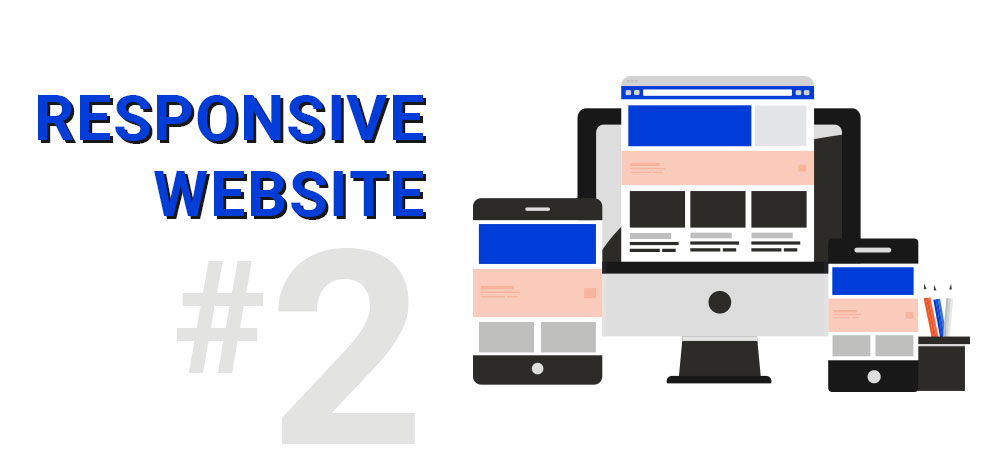 Sorry to say it, but it’s 2020, and if your healthcare website isn’t mobile responsive by now, you probably aren’t getting any organic traffic. In 2018, Google rolled out a new algorithm for search results with respect to mobile indexing. Basically, Google decided it was only going to show search results based on the website’s mobile page version instead of the desktop version. Therefore, every healthcare website out there that isn’t mobile responsive, is only going to show for branded keywords, such as the company name.
The bottom line here is: say bye-bye to new customers if you aren’t willing to have a responsive website.
More than half of online traffic comes from a mobile device. This shouldn’t shock anyone. So are more than half of your healthcare marketing agency’s efforts going to the mobile-researching patient?
So, if your site’s a blast-from-the-past, we recommend making sure you have call-to-actions, CTA for short, and that they’re clearly visible. For more information on rebuilding your healthcare marketing website, check out Web Design Best Practices, Hospital Web Design Services, or Healthcare Web Design Services.
Sorry to say it, but it’s 2020, and if your healthcare website isn’t mobile responsive by now, you probably aren’t getting any organic traffic. In 2018, Google rolled out a new algorithm for search results with respect to mobile indexing. Basically, Google decided it was only going to show search results based on the website’s mobile page version instead of the desktop version. Therefore, every healthcare website out there that isn’t mobile responsive, is only going to show for branded keywords, such as the company name.
The bottom line here is: say bye-bye to new customers if you aren’t willing to have a responsive website.
More than half of online traffic comes from a mobile device. This shouldn’t shock anyone. So are more than half of your healthcare marketing agency’s efforts going to the mobile-researching patient?
So, if your site’s a blast-from-the-past, we recommend making sure you have call-to-actions, CTA for short, and that they’re clearly visible. For more information on rebuilding your healthcare marketing website, check out Web Design Best Practices, Hospital Web Design Services, or Healthcare Web Design Services.
Video Marketing to Attract New Patients
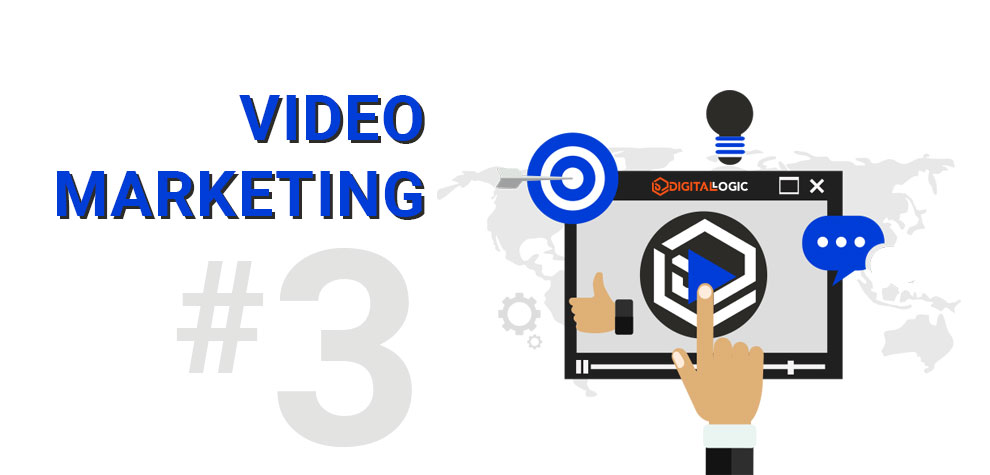 In terms of engagement, no other form of media can really rival video. This is why TV ads have always been the big-shots of past marketing, and also why Youtube ads are quickly becoming more popular than other forms of advertising. A little known fact about Youtube: it’s not only a video website, but it’s also actually a search engine, owned by Google. With over 4 billion searches a month, Youtube is actually bigger than Yahoo, Bing, AOL and Ask, combined. With these facts in mind, as a healthcare marketing professional, you should really consider making video marketing a cornerstone of your future marketing efforts.
You can choose to do a short ad to play before Youtube videos or create your own channel to continue to promote your brand. Allow some room for experimentation as to what works best for your healthcare niche.
Ever heard of “white coat syndrome” or “white coat effect”? In short, it’s a form of anxiety, associated with doctors. Video marketing is a stepping stone to making your profession more approachable to those who are typically intimidated by it. Basically, just by providing videos, you could potentially decrease the blood pressure of some of your valued patients!
With video marketing, you not only need to produce a decent quantity of videos but also a substantial amount of quality videos, whether you do it yourself or hire a special media team. However, if the quality part starts to inhibit the launching of your videos, relax and post them anyways. Over time, your quality will improve and your performance will begin to speak for itself. You don’t have to be a professional videographer to begin; anyone with a smartphone has the potential to be a videographer. Encourage everyone to record things they think could add value to your prospective patients.
In terms of engagement, no other form of media can really rival video. This is why TV ads have always been the big-shots of past marketing, and also why Youtube ads are quickly becoming more popular than other forms of advertising. A little known fact about Youtube: it’s not only a video website, but it’s also actually a search engine, owned by Google. With over 4 billion searches a month, Youtube is actually bigger than Yahoo, Bing, AOL and Ask, combined. With these facts in mind, as a healthcare marketing professional, you should really consider making video marketing a cornerstone of your future marketing efforts.
You can choose to do a short ad to play before Youtube videos or create your own channel to continue to promote your brand. Allow some room for experimentation as to what works best for your healthcare niche.
Ever heard of “white coat syndrome” or “white coat effect”? In short, it’s a form of anxiety, associated with doctors. Video marketing is a stepping stone to making your profession more approachable to those who are typically intimidated by it. Basically, just by providing videos, you could potentially decrease the blood pressure of some of your valued patients!
With video marketing, you not only need to produce a decent quantity of videos but also a substantial amount of quality videos, whether you do it yourself or hire a special media team. However, if the quality part starts to inhibit the launching of your videos, relax and post them anyways. Over time, your quality will improve and your performance will begin to speak for itself. You don’t have to be a professional videographer to begin; anyone with a smartphone has the potential to be a videographer. Encourage everyone to record things they think could add value to your prospective patients.
Invest in Multichannel Initiatives and Touch-Points
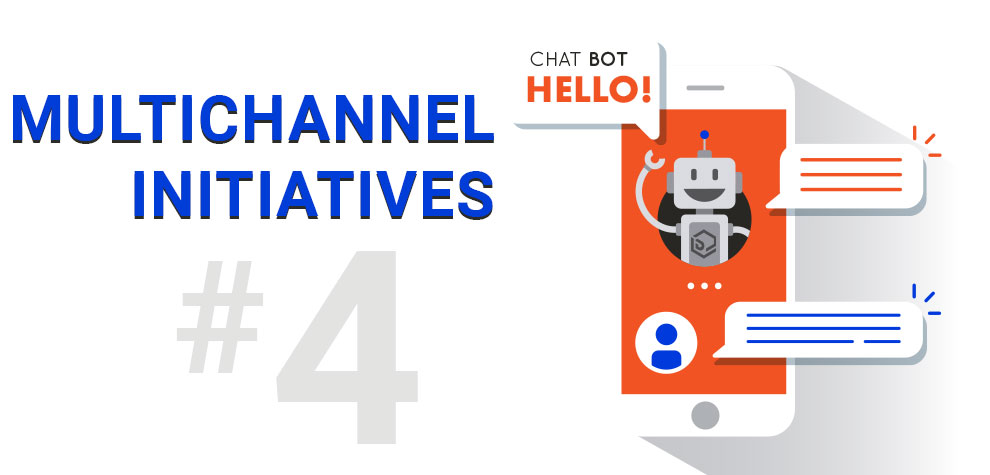 With all the available channels out there, it’s insane to only choose one. After all, how often do you choose to watch a video with the sound off? The same principle applies to marketing your medical practice. You could employ the use of text messaging, chatbots or a simple popup chat for your site. Anything that increases patient engagement will aid in your medical marketing efforts! The easier it is for your prospective patients to get in contact with you, the more engagement you’ll see from your healthcare marketing strategy.
Keep in mind what we said earlier, about mobile users. This doesn’t magically disappear. You ‘ll want to make it easy for mobile users to interact with your bots, as well. Just as some prefer different means of communication with you, they also prefer different means of communication with the general public.
What we’re saying here is, just because you have a form or bot for someone to submit a complaint, that doesn’t mean that’s what’s always going to happen, unfortunately. Some will prefer to go straight to Facebook or Twitter for complaints about their experience or your brand.
You must be prepared and have a specific plan dedicated to social media, not only for marketing but for PR as well. It’s always a good practice to have your phone number clearly visible on your site. It may not get a ton of action, but customers appreciate options and hopefully, will leave your site happier than they got there.
With all the available channels out there, it’s insane to only choose one. After all, how often do you choose to watch a video with the sound off? The same principle applies to marketing your medical practice. You could employ the use of text messaging, chatbots or a simple popup chat for your site. Anything that increases patient engagement will aid in your medical marketing efforts! The easier it is for your prospective patients to get in contact with you, the more engagement you’ll see from your healthcare marketing strategy.
Keep in mind what we said earlier, about mobile users. This doesn’t magically disappear. You ‘ll want to make it easy for mobile users to interact with your bots, as well. Just as some prefer different means of communication with you, they also prefer different means of communication with the general public.
What we’re saying here is, just because you have a form or bot for someone to submit a complaint, that doesn’t mean that’s what’s always going to happen, unfortunately. Some will prefer to go straight to Facebook or Twitter for complaints about their experience or your brand.
You must be prepared and have a specific plan dedicated to social media, not only for marketing but for PR as well. It’s always a good practice to have your phone number clearly visible on your site. It may not get a ton of action, but customers appreciate options and hopefully, will leave your site happier than they got there.

Invest in Your Online Reputation
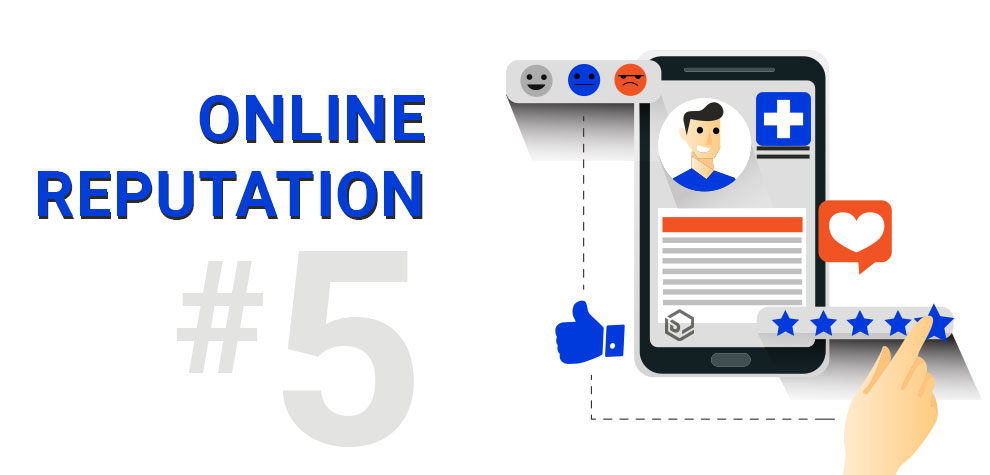 You can invest in ads all day, but if your online reputation is less than ideal, so to speak, customers will be wary to visit your healthcare facility. You want to control the narrative around your healthcare business. Know what your patients are saying and address issues as they come, in a timely manner. You could be the best person, in person, but come off wrong in textual format. This is where hiring someone who is stellar in online customer service will really help your healthcare business, in the long run.
Due to the ever-popular WebMD, many of your patients are “self-diagnosing”. They’ll think they know exactly what’s wrong, even when they may not. The same can be said for your online reputation. Almost half of the population will research a certain doctor or facility before ever setting an appointment. If your online reputation isn’t what it should be, your patients may think they know how good or bad your healthcare practice is, but you could be selling yourself short, here.
People want to be able to trust their doctor or healthcare facility, in general. Therefore, trust is a vital factor in getting new patients. Because of the growing number of people searching for healthcare facilities and doctors online, you need to make sure your brand is one that patients can trust.
One way to boost your online presence is to start a patient referral program. Use simple messages, such as “share the wealth of good health”. Include brochures in welcome or care packets, and follow up when patients do refer. It’s never a bad idea to include a small gift card or voucher to show your appreciation, as well.
Your website also plays a role in your online reputation. Make sure that your landing page is nice, organized, inviting, and that the information presented is accurate. Your website will be your home base for your audience to continue to return to. If your online reputation isn’t what you hoped it would be, consider getting professional help to make sure your online image meshes with your online marketing efforts.
You can invest in ads all day, but if your online reputation is less than ideal, so to speak, customers will be wary to visit your healthcare facility. You want to control the narrative around your healthcare business. Know what your patients are saying and address issues as they come, in a timely manner. You could be the best person, in person, but come off wrong in textual format. This is where hiring someone who is stellar in online customer service will really help your healthcare business, in the long run.
Due to the ever-popular WebMD, many of your patients are “self-diagnosing”. They’ll think they know exactly what’s wrong, even when they may not. The same can be said for your online reputation. Almost half of the population will research a certain doctor or facility before ever setting an appointment. If your online reputation isn’t what it should be, your patients may think they know how good or bad your healthcare practice is, but you could be selling yourself short, here.
People want to be able to trust their doctor or healthcare facility, in general. Therefore, trust is a vital factor in getting new patients. Because of the growing number of people searching for healthcare facilities and doctors online, you need to make sure your brand is one that patients can trust.
One way to boost your online presence is to start a patient referral program. Use simple messages, such as “share the wealth of good health”. Include brochures in welcome or care packets, and follow up when patients do refer. It’s never a bad idea to include a small gift card or voucher to show your appreciation, as well.
Your website also plays a role in your online reputation. Make sure that your landing page is nice, organized, inviting, and that the information presented is accurate. Your website will be your home base for your audience to continue to return to. If your online reputation isn’t what you hoped it would be, consider getting professional help to make sure your online image meshes with your online marketing efforts.
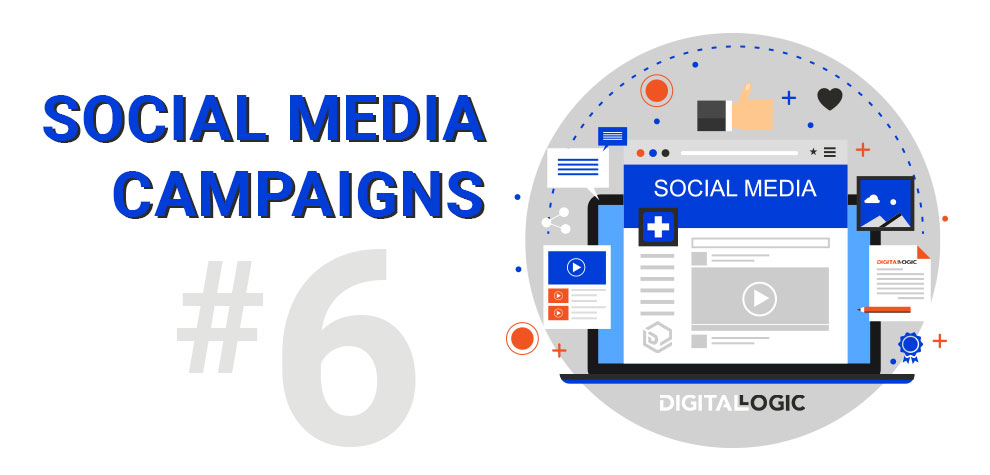 In the healthcare sector, social media is vastly underused. Many healthcare marketers are still struggling to implement social media into their overall healthcare marketing strategy. There are, of course, a few who have done much better than others. A few of these include Dental, Plastic Surgery, and Chiropractics.
Social Media has become a part of everyday life, and therefore, the use of social media is typically lifestyle based. Even though your healthcare niche may not always fit into the lifestyle category, per se, you shouldn’t let this deter you from maintaining a social media presence. Find ways to reach out to your audience. Build awareness around your brand. Provide content that is specific to your industry, and if people are searching, they will find you!
In the healthcare sector, social media is vastly underused. Many healthcare marketers are still struggling to implement social media into their overall healthcare marketing strategy. There are, of course, a few who have done much better than others. A few of these include Dental, Plastic Surgery, and Chiropractics.
Social Media has become a part of everyday life, and therefore, the use of social media is typically lifestyle based. Even though your healthcare niche may not always fit into the lifestyle category, per se, you shouldn’t let this deter you from maintaining a social media presence. Find ways to reach out to your audience. Build awareness around your brand. Provide content that is specific to your industry, and if people are searching, they will find you!
Invest in Location Based SEO
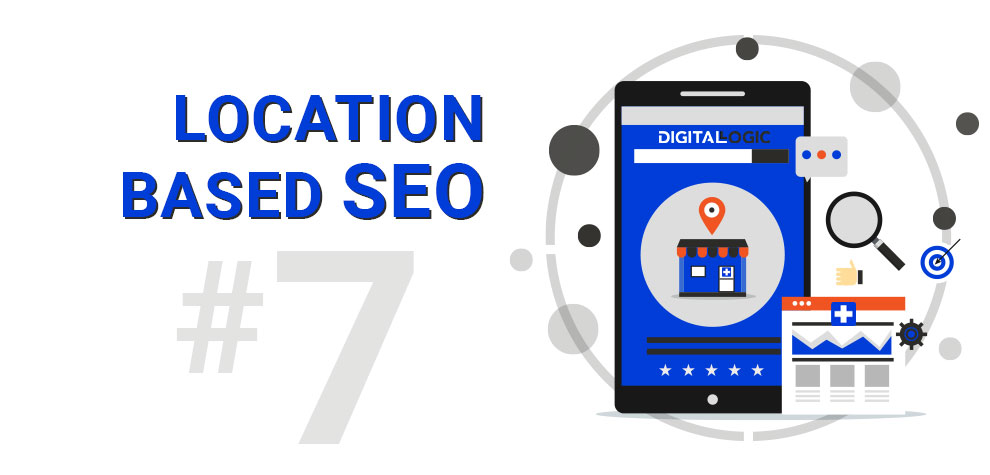 Do you have a healthcare organization with several local branches? Location-based SEO (search engine optimization) could very well be your saving grace. The first step in this is to make sure your website is formatted with the correct location settings in your coding. For more information, look at our Geofencing Advertising Guide.
Publishing content that is location-specific is a good way to get targeted users to browse through your site. Marketers are finding that long-tail SEO search terms are bringing in more traffic and thus, creating content to satisfy the needs of their target audience.
For example, if we were trying to generate local traffic we would use phrases such as “best digital marketing agency in Shreveport, Louisiana.” Ranking for keywords like these on SERP (search engine results page) will generate valuable leads and more qualified traffic.
Another example of this can be found on social media by geotagging location. Google gives preference to nearby locations, so take advantage of this by adding as many location tags as you can, as often as you post. For more information, check out Four Tips to Stand Out Locally.
Do you have a healthcare organization with several local branches? Location-based SEO (search engine optimization) could very well be your saving grace. The first step in this is to make sure your website is formatted with the correct location settings in your coding. For more information, look at our Geofencing Advertising Guide.
Publishing content that is location-specific is a good way to get targeted users to browse through your site. Marketers are finding that long-tail SEO search terms are bringing in more traffic and thus, creating content to satisfy the needs of their target audience.
For example, if we were trying to generate local traffic we would use phrases such as “best digital marketing agency in Shreveport, Louisiana.” Ranking for keywords like these on SERP (search engine results page) will generate valuable leads and more qualified traffic.
Another example of this can be found on social media by geotagging location. Google gives preference to nearby locations, so take advantage of this by adding as many location tags as you can, as often as you post. For more information, check out Four Tips to Stand Out Locally.
Advanced Analytics and AI
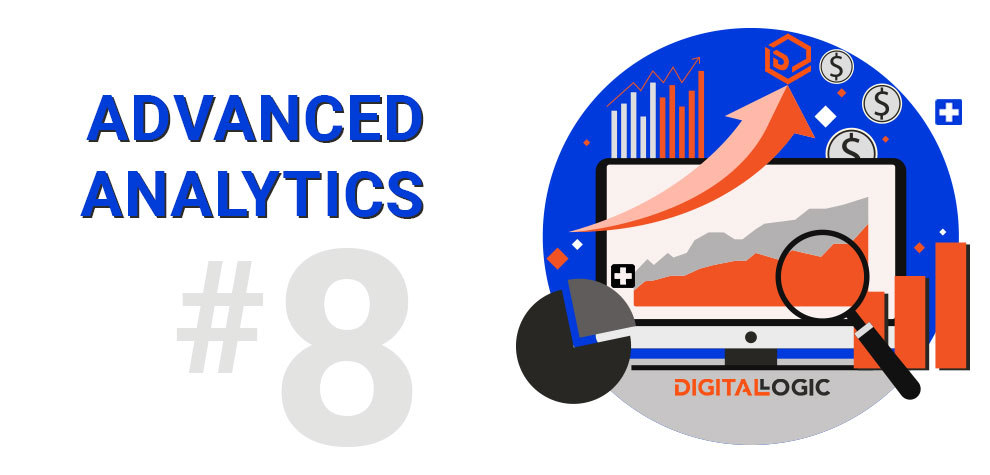 We say marketing is simply getting the right information to the right people at the right time, and advanced analytics and AI (artificial intelligence) can help your marketing do just that. Using analytics isn’t anything new or cutting edge, by any means, but for many companies who have hit a marketing “plateau”, this could make for a positive change.
Using tools, like Ahrefs or Google Search Console is a great way to start understanding how your patients search, otherwise known as consumer behavior. They say don’t judge a book by its cover, but in this case, a lot can be said about your audience’s behavior, just from a glance. Use information like search terms, user activity, and demographics to optimize your campaign as your audience begins to grow.
With your user trends in hand, now is the time to get your feet wet and gain a better understanding of your patients by using AI algorithms.
We say marketing is simply getting the right information to the right people at the right time, and advanced analytics and AI (artificial intelligence) can help your marketing do just that. Using analytics isn’t anything new or cutting edge, by any means, but for many companies who have hit a marketing “plateau”, this could make for a positive change.
Using tools, like Ahrefs or Google Search Console is a great way to start understanding how your patients search, otherwise known as consumer behavior. They say don’t judge a book by its cover, but in this case, a lot can be said about your audience’s behavior, just from a glance. Use information like search terms, user activity, and demographics to optimize your campaign as your audience begins to grow.
With your user trends in hand, now is the time to get your feet wet and gain a better understanding of your patients by using AI algorithms.
Bandwagon on Wellness
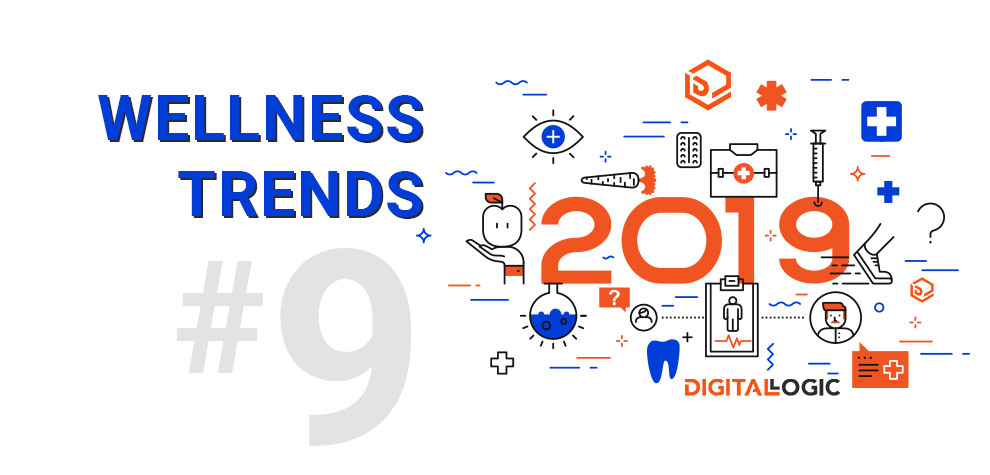 It is no secret to anyone: wellness is at the front and center for trends in 2019. People are fascinated with the idea of healthy living, searching for ideas on how to better themselves, purchasing books and buying products that help to promote a healthier lifestyle. We’ll say this the only way we know how: jump on this bandwagon as soon as you can!
Start creating content targeted to this audience that also ties into your healthcare sector. Think of your wellness content as a social cause. Align your marketing efforts to attract this newfound health conscientious population we are coming to know. This is an excellent way to get your foot in the door.
It is no secret to anyone: wellness is at the front and center for trends in 2019. People are fascinated with the idea of healthy living, searching for ideas on how to better themselves, purchasing books and buying products that help to promote a healthier lifestyle. We’ll say this the only way we know how: jump on this bandwagon as soon as you can!
Start creating content targeted to this audience that also ties into your healthcare sector. Think of your wellness content as a social cause. Align your marketing efforts to attract this newfound health conscientious population we are coming to know. This is an excellent way to get your foot in the door.
